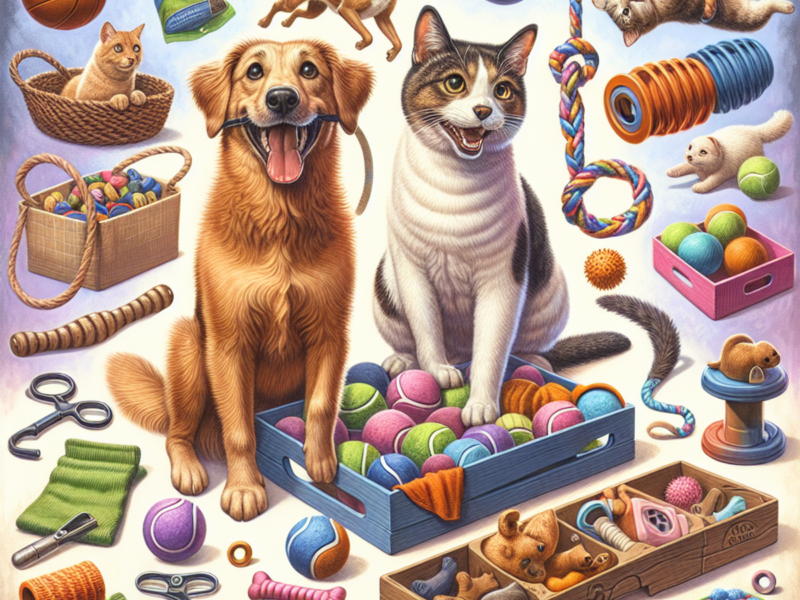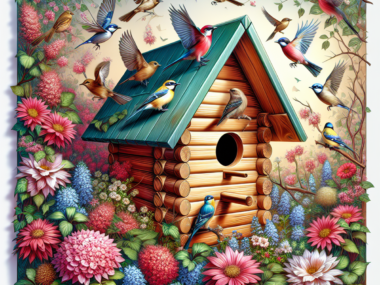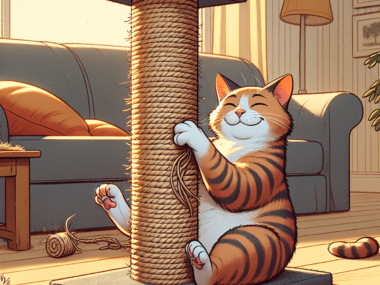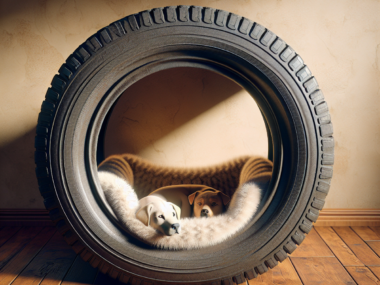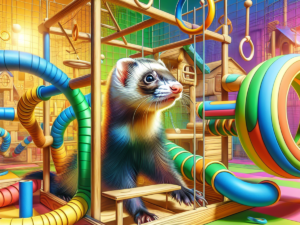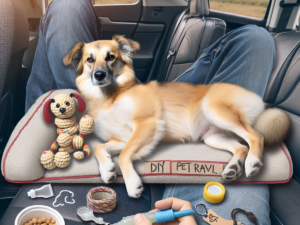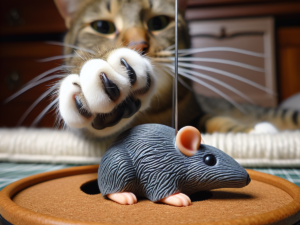Create Your Own Fun: Easy DIY Pet Toys for Dogs and Cat

Introduction
Pets are an integral part of our lives, bringing joy, love, and companionship. As pet owners, it is our responsibility to ensure their well-being and happiness. One way to accomplish this is through playtime. Play not only provides physical exercise for our furry friends but also stimulates their minds and strengthens the bond between pet and owner.
DIY pet toys offer a fun and creative way to engage our dogs and cats in play. By crafting toys ourselves, we can tailor them to suit our pets’ preferences and needs while also saving money on expensive store-bought toys. In this article, we will explore a variety of easy-to-make DIY pet toys for both dogs and cats.
Let’s take a closer look at what this article will cover:
For Dogs:
- Interactive Feeders: These engaging toys provide mental stimulation for dogs during mealtime.
- Tug Toys: Tug-of-war games offer an outlet for dogs’ natural instincts while promoting bonding.
- Agility Jumps: Creating agility jumps at home helps dogs improve their coordination and fitness.
- Pupsicles: Frozen treats help keep dogs cool during hot summer months.
- Frozen Sock Toys: Chewing on frozen sock toys can soothe teething puppies or provide relief for older dogs with dental issues.
For Cats:
- Retired T-Shirt Braided Rope Toys: Repurposing old t-shirts into braided rope toys keeps cats entertained.
- Whack-a-Mole Boxes: DIY boxes with hidden surprises provide mental stimulation for curious cats.
- Tennis Ball Puzzle Games: Engaging puzzle games challenge cats’ problem-solving skills.
- Stuffed Sock Bunnies: Cats will enjoy pouncing on these homemade catnip-filled sock toys.
- Stick and String Toys: A simple stick and string can captivate a cat’s attention for hours.
Get ready to unleash your creativity and provide endless hours of entertainment for your beloved pets with these easy DIY pet toys.
DIY Pet Toys for Dogs
Interactive feeders, tug toys, agility jumps, pupsicles, and frozen sock toys are just a few examples of DIY pet toys that can provide mental stimulation, physical exercise, and bonding opportunities for dogs. These homemade toys are not only fun and engaging but also offer several benefits for your furry friend.
1. Interactive Feeders
Interactive feeders are a great way to engage your dog’s mind while providing them with a slow feeding experience. These toys require your dog to work for their food, which can help prevent boredom and encourage natural foraging behaviors. Some benefits of interactive feeders include:
- Mental Stimulation: By making your dog work for their food, interactive feeders provide mental exercise that can help keep their mind sharp.
- Slow Feeding: Interactive feeders can slow down your dog’s eating pace, which is beneficial for dogs who tend to eat too quickly. This helps prevent digestive issues such as bloating or vomiting.
- Dental Health: Chewing on interactive feeders can help scrape away plaque and tartar from your dog’s teeth, promoting better oral hygiene.
You can easily create DIY interactive feeders using everyday items such as PVC pipes and plastic bottles. Here are a couple of ideas:
- PVC Pipe Feeder: Cut PVC pipes into different lengths and connect them together to create a maze-like structure. Place small treats or kibble inside the pipes, and let your dog figure out how to navigate the maze to access the food.
- Bottle Treat Dispenser: Take a plastic bottle and cut small holes in it. Fill the bottle with treats or kibble, screw the cap back on tightly, and let your dog roll and paw at the bottle to release the treats.
These homemade interactive feeders provide mental stimulation and slow feeding benefits while encouraging problem-solving skills in dogs.
2. Tug Toys
Tug toys are essential for keeping your dog happy and active. They provide mental stimulation and physical exercise, making them a must-have in your pet’s toy collection. In this section, we’ll explore why tug toys are important for dogs and share some easy ways to make them using items you already have at home.
Importance of Tug Toys for Dogs
Tug toys offer several benefits for your furry friend:
- Bonding: Interactive play with tug toys creates a strong bond between you and your dog.
- Dental Health: Tugging on these toys helps clean your dog’s teeth, promoting better oral hygiene.
- Natural Instincts: Dogs have an innate desire to pull and chew. Tug toys provide a safe and appropriate outlet for these instincts.
DIY Tug Toy Ideas Using Old T-Shirts and Ropes
You don’t need to spend a fortune on store-bought toys. Here are two simple DIY ideas using old T-shirts and ropes:
- Old T-Shirt Braided Rope: Cut an old T-shirt into strips, then braid them tightly together. This creates a durable rope toy that your dog can chew on and play tug-of-war with.
- Rope Ball Toy: Take multiple ropes of equal length and tie them together at one end. Then, weave the loose ends through the knots to form a ball-like shape. This homemade toy is perfect for interactive games of tug-of-war.
These homemade tug toys are not only cost-effective but also eco-friendly as they repurpose old materials. Plus, they provide hours of entertainment for your canine companion!
Remember to supervise your dog while they play with any toy, including tug toys, to ensure their safety.
Tug toys are a valuable addition to your DIY pet toy collection, offering both entertainment and health benefits for your beloved canine companion.
3. Agility Jumps
Agility jumps are a fantastic way to provide physical exercise and mental stimulation for dogs. These jumps simulate the obstacles that dogs encounter in agility courses, helping them develop their coordination, balance, and agility skills. In addition to the physical benefits, agility jumps also offer great opportunities for training and bonding with your pets.
Here are some key benefits of incorporating agility jumps into your dog’s playtime:
- Physical Exercise: Agility jumps require dogs to jump over and navigate obstacles, providing an excellent cardiovascular workout. Regular exercise helps keep dogs fit and maintains a healthy weight, reducing the risk of obesity-related health issues.
- Mental Stimulation: When dogs engage in agility jumps, they must assess the distance and height of the jump and make split-second decisions on how to clear it. This mental challenge helps keep their minds sharp and engaged.
- Training Opportunities: Agility jumps can be used as part of your dog’s training routine. By teaching them to jump on command or navigate a series of jumps in a specific order, you can improve their obedience skills and reinforce commands such as “sit,” “stay,” and “come.”
Creating DIY Agility Jumps
Now let’s move on to creating DIY agility jumps using simple materials you may already have at home:
PVC Pipe Jumps
PVC pipes are versatile and readily available at hardware stores. To create an agility jump using PVC pipes, follow these steps:
- Measure the desired height for the jump.
- Cut two pieces of PVC pipe for the vertical poles.
- Insert the poles into PVC connectors or T-joints.
- Adjust the width of the jump by attaching another piece of PVC pipe horizontally between the vertical poles.
- Secure the jump by placing them in the ground or using weights such as sandbags.
Old Towel Jumps
Another option for creating agility jumps is repurposing old towels. Here’s how:
- Fold the towel in half lengthwise to create a long strip.
- Roll the towel tightly from one end to the other.
- Bend the rolled towel into a U-shape, creating a jump.
- Secure the ends of the towel together using safety pins or sewing them.
By incorporating agility jumps into your dog’s playtime, you provide them with both physical exercise and mental stimulation. These DIY jumps are easy to create and can be adjusted to suit your dog’s size and ability level. Remember to start with lower heights and gradually increase the difficulty as your dog becomes more comfortable and skilled.
4. Pupsicles
Pupsicles are a great way to keep your dog cool and entertained in hot weather. These frozen treats are not only refreshing, but they also provide mental stimulation and relief for teething puppies.
Why Cooling Treats are Important for Dogs
It’s important to understand why cooling treats are beneficial for dogs, especially when the weather is warm:
- Beat the Heat: Dogs can easily overheat in hot temperatures, leading to discomfort and potential health issues. Cooling treats like pupsicles help lower their body temperature and keep them comfortable.
- Hydration: Some cooling treats, like watermelon popsicles or frozen broth cubes, contain high water content which helps hydrate your dog.
- Calming Effect: Chewing on something cold can have a calming effect on dogs, similar to how humans feel when sucking on ice cubes.
DIY Pupsicle Recipes
Making your own pupsicles at home is simple and allows you to control the ingredients. Here are two easy recipes to try:
- Apple Peanut Butter Pupsicles:
- Ingredients:
- 1 cup unsweetened applesauce
- 1/4 cup natural peanut butter (make sure it doesn’t contain xylitol, as it’s toxic to dogs)
- Instructions:
- Mix the applesauce and peanut butter together in a bowl until well combined.
- Pour the mixture into ice cube trays or silicone molds.
- Freeze for at least 4 hours or until solid.
- Benefits: Applesauce provides vitamins and fiber while peanut butter adds protein and flavor.
- Sweet Potato Yogurt Pupsicles:
- Ingredients:
- 1 cooked sweet potato, mashed
- 1/2 cup plain Greek yogurt
- Instructions:
- In a bowl, mix the mashed sweet potato and Greek yogurt until smooth.
- Spoon the mixture into ice cube trays or silicone molds.
- Freeze for at least 4 hours or until solid.
- Benefits: Sweet potatoes are a good source of vitamins and minerals, while Greek yogurt offers probiotics for digestive health.
These homemade treats are not only budget-friendly but also allow you to customize the ingredients based on your dog’s preferences and dietary needs.
By adding pupsicles to your collection of DIY pet toys, you can ensure that your furry friend stays cool, happy, and satisfied with a delicious and nutritious snack.
5. Frozen Sock Toys
Frozen sock toys are a simple and inexpensive way to provide both mental stimulation and physical exercise for your dog. They can be made easily at home using just a few materials, making them a convenient option for pet owners. In this section, we will explore the benefits of frozen sock toys for dogs and provide a step-by-step guide on how to make them.
Benefits of Frozen Sock Toys for Dogs
Frozen sock toys offer several advantages for dogs:
- Teething Relief: The cold and textured surface of the frozen sock toy can provide relief for teething puppies and adult dogs with sore gums.
- Soothing Effect: The act of chewing on the frozen sock can have a calming and soothing effect on dogs, especially during hot weather.
- Mental Stimulation: A frozen sock toy can engage dogs mentally as they try to extract the cold treat from the fabric.
- Physical Exercise: Chewing and playing with the frozen sock toy can provide physical exercise for your dog’s jaws and neck muscles.
How to Make DIY Frozen Sock Toys Using Socks and Fleece Fabric
You can easily create your own frozen sock toys using socks and fleece fabric with these simple steps:
Materials Needed:
- Clean socks (avoid using socks with small parts like buttons)
- Fleece fabric
- Scissors
- Freezer-friendly fillings such as wet dog food or meat broth
Steps:
- Take a clean sock and stuff it with fleece fabric to add texture and volume.
- Tie a knot at the opening of the sock to secure the fleece inside.
- Wet the stuffed sock with water or meat broth.
- Place the wet sock in a plastic bag and freeze it until solid.
Safety Tips:
It’s important to prioritize your dog’s safety while using any type of toy, including frozen sock toys. Here are some tips to keep in mind:
- Always supervise your dog while they are playing with the frozen sock toy to ensure they do not ingest any non-edible parts.
- If your dog is prone to destroying toys, consider using tougher materials or alternative toys to avoid accidental ingestion.
Conclusion
Creating DIY pet toys like frozen sock toys provides an enriching experience for both you and your pet. It’s an opportunity to bond with your furry friend while also ensuring their physical and mental well-being.
DIY Pet Toys for Cats
Cats love to play, and interactive toys are a great way to keep them entertained. Making your own pet toys is not only fun but also allows you to be creative while saving money and being environmentally friendly. Here are some ideas for DIY pet toys that are specifically designed for cats:
1. Retired T-Shirt Braided Rope Toys
- Cats enjoy chasing and pouncing on things, and retired T-shirt braided rope toys are perfect for this kind of play.
- You can easily make these toys by turning old T-shirts into braided ropes. Just cut the shirts into long strips, braid them together, and tie knots at each end.
- The texture of the fabric is appealing to cats, and the knots give them something to grip onto during play.
- Not only will these homemade toys keep your cat entertained, but they also give new life to old clothes.
2. Whack-a-Mole Boxes
- Whack-a-mole boxes are a simple yet effective way to provide mental stimulation and engage your cat’s hunting instincts.
- To make a whack-a-mole box, take a cardboard box and cut several holes of different sizes on the sides.
- Place small balls or toys inside the box and watch as your cat tries to catch them through the holes.
- This interactive game challenges your cat’s problem-solving skills and provides endless entertainment.
3. Tennis Ball Puzzle Games
- Puzzle games are a great way to keep your cat mentally stimulated and entertained.
- Create a simple puzzle game by cutting holes in a cardboard box and putting tennis balls inside.
- Your cat will have fun trying to remove the balls from the box, which stimulates their problem-solving skills.
- For an extra exciting twist, you can hide treats inside the box as well.
4. Stuffed Sock Bunnies
- Cats are naturally attracted to toys that resemble prey, and stuffed sock bunnies are a perfect choice.
- To make a stuffed sock bunny, take a clean sock and fill it with catnip or stuffing material.
- Tie a knot at the end to secure the filling and create a tail-like effect.
- Your cat will enjoy batting, pouncing, and carrying around their new toy.
5. Stick and String Toys
- Stick and string toys are simple yet effective in satisfying your cat’s hunting instincts and providing exercise.
- Find a sturdy stick or dowel and attach a string to one end.
- Tie a small toy or feather to the other end of the string.
- Move the toy around to mimic the movement of prey, and watch as your cat engages in an exciting play session.
By creating DIY pet toys for your cats, you not only provide them with entertainment but also strengthen the bond between you and your furry companion. These homemade toys can be customized to suit your cat’s preferences, making playtime even more enjoyable. So gather some retired T-shirts, cardboard boxes, tennis balls, socks, and strings, and start crafting these fun toys for your feline friend!
2. Whack-a-Mole Boxes
Whack-a-mole boxes are a popular choice for DIY pet toys for cats. They offer both entertainment and mental stimulation for your furry friend. These interactive play boxes imitate the classic arcade game where cats can use their paws to “whack” toy balls that pop out from different holes. Here’s why whack-a-mole boxes are great for cats and a simple guide on making one yourself:
Benefits of Whack-a-Mole Boxes for Cats:
- Mental Stimulation: Whack-a-mole boxes engage your cat’s problem-solving skills as they try to catch and swat the toy balls. This mental stimulation is essential for keeping your cat sharp and entertained.
- Hunting Instincts: Cats have a natural hunting instinct, and whack-a-mole boxes tap into this instinct by allowing them to “hunt” and capture the toy balls. This type of play satisfies their predatory needs and provides a healthy outlet for their energy.
- Exercise: The act of swatting at the moving toy balls in the whack-a-mole box provides physical exercise for your cat. It helps them stretch, jump, and stay active, which is crucial for their overall health and well-being.
How to Make DIY Whack-a-Mole Boxes:
- Gather Materials: You will need a sturdy cardboard box with flaps, a utility knife or scissors, colorful paper or wrapping paper, tape or glue, and small toy balls.
- Prepare the Box: Cut several round holes of varying sizes into one side of the cardboard box. Make sure the holes are large enough for the toy balls to pop through but not too big that your cat’s paw can get stuck.
- Decorate the Box: Cover the entire box with colorful paper or wrapping paper using tape or glue. This step adds a fun and visually appealing touch to the whack-a-mole box.
- Insert Toy Balls: Place the small toy balls inside the box, one in each hole. Ensure that they are securely positioned so they won’t fall out too easily.
- Let Your Cat Play: Introduce the whack-a-mole box to your cat and let them explore and play with it at their own pace. You can interact with your cat by moving the toy balls around to entice them to play.
Creating a DIY whack-a-mole box for your cat is a fantastic way to provide them with mental stimulation, exercise, and endless entertainment. The best part is that you can make this eco-friendly toy using upcycled materials, such as a cardboard box and small toy balls. So why not give it a try and see how much joy it brings to your feline companion?
Note: Always supervise your cat during playtime with any DIY toy to ensure their safety.
3. Tennis Ball Puzzle Games
The mental and physical well-being of your feline friends are equally important. Engaging them in stimulating activities can help prevent behavioral issues and keep them healthy and happy. Puzzle games are a fantastic way to provide interactive play for cats while encouraging their problem-solving skills. DIY tennis ball puzzle games are not only entertaining but also offer mental stimulation that is essential for their overall well-being.
Importance of Puzzle Games for Cats
- Puzzle games provide mental stimulation and prevent boredom in cats.
- They encourage problem-solving skills and keep the mind active.
- Interactive play with puzzle games mimics hunting instincts, providing a natural form of exercise.
DIY Tennis Ball Puzzle Game Ideas
- Tennis Ball Treat Dispenser: Cut a small hole in a tennis ball and fill it with your cat’s favorite treats. As they roll the ball around, treats will dispense intermittently, keeping them engaged and entertained.
- Ball-and-Cup Puzzle: Cut holes in a cardboard box and place tennis balls inside. Your cat can reach into the holes to bat at the balls or try to remove them from the box.
- Hanging Tennis Balls: Attach tennis balls to strings or ropes hanging from doorknobs or other elevated surfaces. Your cat can swat at the balls, promoting physical activity and mental engagement.
These DIY puzzle games are simple to make and provide endless entertainment for your feline companions.
By incorporating these engaging activities into your cat’s playtime routine, you can ensure they stay mentally and physically active while having a great time.
4. Stuffed Sock Bunnies
Stuffed sock bunnies are a delightful DIY toy that can provide endless entertainment for cats. These adorable toys are not only fun to play with but also easy to make using simple materials like socks and catnip. Let’s explore the benefits of stuffed sock bunnies for cats and learn how to create them.
Benefits of Stuffed Sock Bunnies for Cats
- Mental Stimulation: Stuffed sock bunnies engage cats in interactive play, stimulating their problem-solving skills and providing mental exercise.
- Entertainment: These toys keep cats entertained for hours, reducing boredom and preventing destructive behavior.
- Catnip Toys: By adding catnip to the stuffed sock bunnies, you can enhance their appeal and attract your feline friend even more.
How to Create DIY Stuffed Sock Bunnies
Creating your own stuffed sock bunny is a simple and enjoyable process. Here’s a step-by-step guide:
- Gather Materials: Collect an old sock (preferably one without holes), scissors, needle, thread, and catnip.
- Prepare the Sock: Turn the sock inside out and flatten it.
- Create the Body: Starting from the toe end, tightly roll the sock towards the ankle area, forming a tube-like shape.
- Secure the Body: Use a needle and thread to sew along the edge of the rolled sock, ensuring it stays tightly secured.
- Form the Head: Once the body is secure, fold about two inches of fabric at one end of the tube to create the bunny’s head.
- Tie off the Head: Use a piece of string or thread to tightly secure the folded fabric, creating a separation between the head and body.
- Add Catnip: Fill the body of the bunny with catnip, leaving enough space for it to move around freely.
- Close the Bunny: Finally, sew the open end of the sock to close the bunny’s body, ensuring the catnip stays inside.
With these simple steps, you can create a fun and enticing stuffed sock bunny for your feline companion. Watch as they pounce, toss, and chase their new favorite toy!
5. Stick and String Toys
Stick and string toys are a great choice for DIY cat toys that provide interactive play and mental stimulation. These toys tap into a cat’s natural hunting instincts, offering entertainment while promoting exercise and problem-solving skills.
Why stick and string toys are important for cats
Stick and string toys offer several benefits for cats:
- Interactive Play: Engages cats in active play, promoting physical activity and mental engagement.
- Mental Stimulation: Encourages problem-solving skills as cats try to catch the moving target.
- Hunting Instincts: Mimics the thrill of hunting, satisfying a cat’s natural instincts.
DIY stick and string toy ideas
Creating your own stick and string toy is a simple yet effective way to keep your feline friend entertained:
- Materials Needed: Gather a sturdy stick or rod and attach a lightweight toy or feather to a string.
- Assembly: Secure the string to the stick, ensuring it’s long enough for the toy to dangle freely.
- Engage Your Cat: Gently move the toy around, encouraging your cat to pounce and play.
By incorporating upcycled materials such as retired T-shirts or eco-friendly components, you can customize these toys to suit your cat’s preferences while reducing waste from store-bought options. Embracing these DIY creations not only provides an affordable source of entertainment but also nurtures a deeper bond between you and your beloved pet.
Conclusion
Creating DIY pet toys for dogs and cats is a fun and rewarding activity that not only provides entertainment for your furry friends but also allows you to bond with them. By using simple household items, you can easily make toys that will keep your pets mentally stimulated and physically active.
Whether you have a dog or a cat, there are plenty of DIY toy options available for you to explore. From interactive feeders to tug toys, agility jumps to pupsicles, there is something for every pet’s preferences and needs. By incorporating these DIY toys into your pet’s playtime routine, you can enhance their overall well-being and happiness.
Not only are DIY pet toys beneficial for your pets, but they also have several advantages for you as well:
- Cost-effective: Making your own pet toys saves money compared to buying expensive store-bought alternatives.
- Customizable: You can tailor the DIY toys to suit your pet’s preferences and needs. Personalize them with different colors, textures, or scents.
- Eco-friendly: By upcycling materials like old T-shirts, ropes, socks, and cardboard, you are reducing waste and contributing to a more sustainable lifestyle.
So why not unleash your creativity and start making DIY pet toys today? Your pets will love the new additions to their toy collection, and you’ll enjoy the satisfaction of creating something unique for them.
Remember, the most important thing is to have fun while engaging in this creative process. Enjoy the time spent with your pets as you watch them play with the toys you’ve made especially for them.
Give it a try – your pets will thank you!
